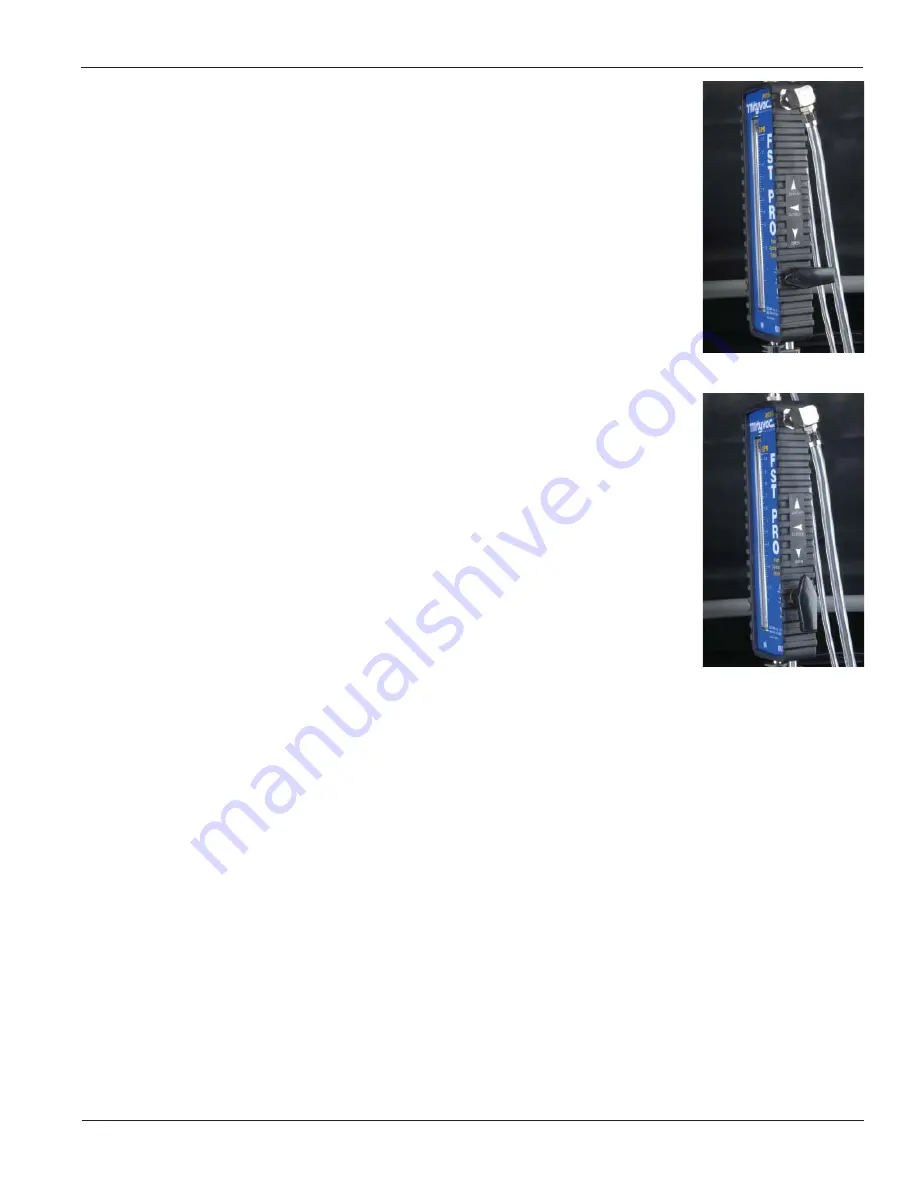
Form 824262
Page Number - 13
Testing and Diagnostics
Testing and diagnostic procedures vary depending on the type of fuel
delivery system. Prior to testing, the fuel delivery system must be
identified as Return, Returnless (mechanically regulated) or Returnless
(electronically regulated). For detailed information on fuel delivery
systems and how to identify them, refer to the section entitled Types of
Fuel Delivery Systems, earlier in this manual. If the fuel system is
a return or mechanically regulated returnless system, it must also be
determined if the fuel pump has multiple speeds.
Return Fuel Delivery Systems
At this point, it is assumed that the FST has been properly installed
inline with the fuel delivery system as recommended, and that it has
been primed to ensure no leaks are present (see
Setup and Installa-
tion
). The following procedure will ensure the most effective diagnostic
use of the FST:
Test Procedure
Operational Test
1. Check the operating position of the flow control valve on the side of
the flowmeter to ensure the knob is in the OPEN position pointing
down (Fig. 16). This will allow normal fuel system operation.
2. Start the car and allow it to idle.
Cranking or starting the engine should activate the ECM’s electric
fuel pump controls to turn on and run the fuel pump. If the fuel
pump does not operate, refer to the vehicle service information
for electrical diagnosis and repair of the fuel pump and
associated controls.
After connecting the FST, it is normal to have air trapped in the fuel
lines and flowmeter. Cycling the ignition switch (or cranking the
engine briefly) with the flow control valve in the BYPASS
position can help purge air from the system. Once fuel fills the
flowmeter and flows through the bypass hose, return the valve to
the OPEN position. The bypass hose must be routed and secured
into an approved fuel container before operating the flow control
valve in BYPASS mode.
To perform an accurate diagnosis using the FST, the car must
be running in order to provide the correct operating voltage to the
fuel pump. Testing the fuel system by activating the fuel pump
using a scan tool will cause the fuel pump to severely under-
perform.
3. If the vehicle utilizes a multiple speed fuel pump, use a scanner or
manufacturer’s recommended procedure to operate the pump at
the highest speed.
4. Note the fuel system pressure indicated on the pressure gauge,
and compare it with the vehicle manufacturer’s specification
(Fig. 17).
Typical electronic fuel injection system pressures range from 2 to
4 bar (30 to 60 PSI) (205 to 410 kpa) depending on the vehicle
being tested. Always use the recommended vehicle service infor-
mation, procedures, and pressure specifications for the specific
vehicle being tested.
5. Note the volume of fuel passing through the flowmeter by reading
across the top of the float and comparing it to the corresponding
value on the scale printed on the faceplate (Fig. 18).
At idle, the volume of fuel flowing through the tester should remain
steady between 1.1 and 2.6 liters per minute (LPM).
Fig. 19
Fig. 20




























